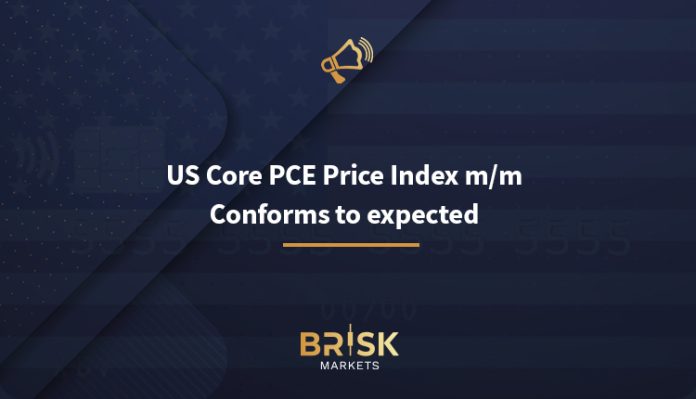
Time: 12:30 pm GMT, Morocco time: 1:30 hours, Egypt time: 3:30 hours, Saudi time: 4:30 hours, Emirates time: 5:30 hours
Previous: 0.3% Expected: 0.3% Actual: 0.3%
US Core PCE Price Index m/m
The US core personal consumption expenditures price index, also known as the personal consumption expenditures (PCE) price index, is a measure of inflation that tracks changes in the prices of goods and services consumed by households in the United States, excluding food and energy prices. It is often considered a more stable indicator of underlying inflation trends than the GDP price index because food and energy prices can be volatile due to factors beyond underlying inflationary pressures.
If the PCE release is greater than expected, this indicates that inflation is rising faster than expected. This could have a variety of effects on the economy and financial markets.
High inflation can lead to higher interest rates, which in turn can slow economic growth and reduce corporate profits. It can also erode consumers’ purchasing power, while increasing the cost of goods and services. In addition, rising inflation can increase uncertainty in financial markets, as investors try to anticipate how the Federal Reserve and other policymakers will respond to inflationary pressures.
If the PCE release is lower than expected, it could indicate that inflation is not rising as fast as expected. This could have a variety of effects on the economy and financial markets.
Lower inflation can lead to lower interest rates, which can stimulate economic growth and corporate profits. It can also help maintain or increase the purchasing power of consumers, as the cost of goods and services increases at a slower rate. In addition, lower inflation can lead to increased confidence in financial markets, as investors feel more certain about the outlook for inflationary pressures.
However, if inflation remains too low for a long time, it can also have negative effects on the economy, including the potential for it to lead to deflation, or a sustained decline in prices, which could hurt economic growth and cause job losses.
Impact of US Core PCE Price Index m/m on US Dollar Forex Trading?
The US core PCE price index can have a significant impact on the US dollar in forex trading. This is because the PCE price index is a leading indicator of inflation and can provide insight into the future direction of interest rates, which are critical factors in determining the value of a currency.
Here are some of the ways the US Core PCE Price Index can affect USD forex trading:
Interest rate expectations: The PCE price index can provide insight into future levels of inflation, which can influence expectations for interest rate policy. If the PCE price index rises higher than expected, this could indicate higher inflation and the possibility of future interest rate hikes by the Federal Reserve. Higher interest rates generally make the currency more attractive to investors, thus increasing demand for the currency and potentially boosting its value in the forex markets.
Economic Growth Outlook: The PCE price index can also provide insight into the strength of the US economy. If the PCE price index rises higher than expected, this could indicate stronger economic growth, which could be positive for the US dollar. Conversely, if the PCE price index is lower than expected, this could indicate weak economic growth, which could lead to a weaker US dollar.
Market sentiment: The PCE price index is often used by forex traders as a gauge of market sentiment regarding inflation and interest rates. Higher-than-expected PCE readings could point to higher inflation and higher interest rates, which could boost the US dollar. Conversely, lower-than-expected PCE readings may indicate weaker inflation and lower interest rates, which could lead to a weakening of the US dollar.
The body responsible for issuing the US Core PCE Price Index m/m
The core PCE price index in the United States is released by the Bureau of Economic Analysis (BEA), an agency within the US Department of Commerce.
When will the US Core PCE Price Index m/m be released?
The Bureau of Economic Analysis (BEA) releases the core PCE price index in the US on a monthly basis. The release date is usually scheduled around the end of each month and announced in advance on the BEA website and through other economic calendars.
The exact release date and time may vary slightly from month to month,
Next release
May 31, 2024
















